## Introduction
**Introduction**
Located on the Big Island of Hawai‘i, Hawai‘i Volcanoes National Park is a natural wonder that attracts visitors from all over the world. This unique park is home to two of the most impressive volcanoes in the Hawaiian Islands: Kīlauea and Mauna Loa. For those looking to explore the park’s stunning landscapes and geological wonders, this guide provides an in-depth driving tour of Hawai‘i Volcanoes National Park, highlighting the must-see lava flows, craters, and volcanic features.
The park’s most famous feature is Kīlauea, one of the world’s longest-erupting volcanoes. Since 1983, Kīlauea has been erupting continuously, making it an unparalleled opportunity for scientists and visitors alike to study this geological phenomenon up close. The park’s visitor center provides a wealth of information on the park’s geology, history, and cultural significance.
For those looking to explore beyond the visitor center, this guide offers a comprehensive driving tour of the park’s most impressive attractions, including the Kīlauea caldera, Mauna Loa’s summit, and the Thurston Lava Tube. With its stunning natural beauty, rich cultural heritage, and unparalleled geological wonders, Hawai‘i Volcanoes National Park is a must-visit destination for anyone interested in the natural world.
In this guide, we’ll take you on an unforgettable journey through Hawai‘i Volcanoes National Park’s most breathtaking landscapes and attractions. Whether you’re a geology enthusiast, a nature lover, or simply looking for an unforgettable adventure, this driving guide will provide you with the ultimate experience of Big Island lava and crater country.
## Part One
**Part One: Introduction to Hawai‘i Volcanoes National Park**
Located on the Big Island of Hawaii, Hawai‘i Volcanoes National Park is a unique and awe-inspiring destination that showcases the incredible natural beauty of volcanic landscapes. As one of the most visited national parks in the United States, it attracts millions of visitors each year who come to marvel at its majestic volcanoes, steam vents, and lava tubes. This driving guide will take you on an unforgettable journey through the park’s stunning landscapes, providing insights into its geology, history, and wildlife.
Hawai‘i Volcanoes National Park is home to two prominent volcanoes: Kīlauea and Mauna Loa. These mighty mountains have been shaping the island’s landscape for centuries, with Kīlauea being one of the most active volcanoes on the planet. The park also features a vast network of volcanic caves, including the popular Thurston Lava Tube, which offers visitors a unique glimpse into the park’s geological history.
As you plan your visit to Hawai‘i Volcanoes National Park: Big Island Lava and Crater Driving Guide, it’s essential to understand the park’s layout and attractions. This driving guide will provide you with an insider’s perspective on the best routes, stops, and activities to enjoy during your visit. From the Kīlauea Visitor Center to the Jagger Museum, this comprehensive guide will take you on a journey through the park’s most fascinating sites.
In Part Two of our driving guide, we’ll delve into the park’s driving routes and attractions in greater detail, providing you with practical information on how to navigate the park’s roads and trails. Whether you’re interested in exploring the park’s volcanic landscapes, visiting historic sites, or spotting unique wildlife, this driving guide has got you covered. Get ready to embark on an unforgettable adventure through Hawai‘i Volcanoes National Park: Big Island Lava and Crater Driving Guide!
## Part Two
**Part Two: Exploring Kīlauea’s Summit and Halema’uma’u Crater**
As you drive through Hawai‘i Volcanoes National Park, one of the most iconic and awe-inspiring sights is Kīlauea’s summit, which stands tall at 4,091 feet above sea level. The park offers several viewpoints and hiking trails that provide breathtaking views of this active volcano’s caldera. For a unique perspective, visit the Kīlauea Overlook, where you can see the crater’s rim stretching across the horizon.
To truly experience the power of Hawai‘i Volcanoes National Park, take a short drive to the Jaggar Museum and view the Halema’uma’u Crater. This 7,700-foot-deep caldera is home to a perpetual lava lake, which has been burning since 1983. The visitor center offers interactive exhibits and guided tours to provide insight into this remarkable geological wonder.
As you explore Kīlauea’s summit, keep in mind that the volcano’s activity can be unpredictable, and access to certain areas may be restricted due to safety concerns. However, park rangers are always available to provide information on current conditions and recommend suitable viewing areas. Take a moment to appreciate the vastness of this natural wonder and the incredible geological forces that shape our planet.
For those seeking a more immersive experience, consider taking a guided hike down into Kīlauea’s caldera or exploring the park’s many hiking trails, including the 11-mile Crater Rim Trail. These trails offer unparalleled views of the volcano’s lava flows, steam vents, and volcanic landscapes, providing a deeper understanding of Hawai‘i Volcanoes National Park’s unique geology.
## Part Three
**Part Three: Exploring Kīlauea Caldera and Pu’u O’o**
As you venture into Hawai‘i Volcanoes National Park, one of the most unforgettable experiences is exploring the majestic Kīlauea Caldera. This massive volcanic caldera stretches for over 3 miles in diameter and offers breathtaking views of the surrounding landscape. Take a short hike to the rim of the caldera, where you can gaze out at the stunning vista below.
As you explore the park’s scenic routes, be sure to stop at the Kīlauea Visitor Center to learn more about the geological history of this incredible natural wonder. Rangers and volunteers are on hand to provide insight into the ongoing volcanic activity in the area, as well as offer recommendations for the best viewing spots within the park.
One of the most unique experiences within Hawai‘i Volcanoes National Park is exploring the Pu’u O’o lava tube. This ancient lava flow offers a glimpse into the geological past of the Big Island, with its unique rock formations and eerie landscapes. Take a guided tour or venture forth on your own to explore this fascinating natural wonder.
As you explore the park’s many trails and scenic routes, be sure to keep an eye out for the numerous cinder cones and lava flows that dot the landscape. These geological wonders are a testament to the ongoing volcanic activity in the area, and offer a unique glimpse into the Big Island’s fiery past. Whether you’re an avid hiker or simply looking for a unique driving experience, Hawai‘i Volcanoes National Park has something to offer every visitor.
## Part Four
**Part Four: Exploring the Calderas of Kīlauea and Mauna Loa**
As you continue your driving guide through Hawai‘i Volcanoes National Park, you’ll have the opportunity to explore two of the most iconic calderas in the park: Kīlauea Caldera and Mauna Loa Caldera. These massive depressions were formed by volcanic eruptions that emptied the magma chambers beneath the volcanoes.
As you approach the Kīlauea Caldera, you’ll notice the dramatic change in landscape as you descend into the caldera. The rim of the caldera is marked by a 300-foot-high (91 meters) cliff that offers breathtaking views of the caldera floor. Take a short walk along the Jaggar Museum’s observation deck to get an up-close look at the volcanic features and learn about the park’s geological history.
Next, head to Mauna Loa Caldera, which is approximately 10 miles (16 kilometers) northwest of Kīlauea Caldera. This massive caldera stretches over 3 miles (4.8 kilometers) in diameter and offers a unique glimpse into the volcanic past. Take a short walk on the caldera rim or explore the Mauna Loa Visitor Center to learn more about this incredible geological feature.
As you explore the calderas, be sure to take in the stunning views of the surrounding landscape, which is dotted with volcanic rocks, lava flows, and lush vegetation. The combination of geological features and natural beauty makes Hawai‘i Volcanoes National Park a truly unique destination for visitors from around the world. With this driving guide, you’ll have the opportunity to explore the best of what the park has to offer, including the iconic Kīlauea and Mauna Loa calderas.
## Conclusion
**Conclusion**
As you conclude your journey through Hawai‘i Volcanoes National Park: Big Island Lava and Crater Driving Guide, it’s clear that this natural wonder has left an indelible mark on your heart and mind. The stunning landscapes, geological wonders, and rich cultural heritage have undoubtedly made a lasting impression.
Hawai‘i Volcanoes National Park is more than just a destination – it’s an experience that connects you to the very essence of the Big Island. As you’ve explored the park’s lava tubes, craters, and scenic overlooks, you’ve gained a deeper understanding of the unique geological forces that have shaped this land.
Throughout your driving guide, we’ve shared insider knowledge on how to make the most of your visit, from navigating the park’s winding roads to discovering hidden gems. Whether you’re an avid hiker, nature enthusiast, or simply looking for an unforgettable adventure, Hawai‘i Volcanoes National Park: Big Island Lava and Crater Driving Guide has provided you with the tools to create lifelong memories.
As you depart this incredible destination, we hope that the majesty of Kīlauea’s lava flows, the tranquility of Thurston Lava Tube, and the awe-inspiring landscapes will remain etched in your memory. For those seeking a true immersion into the natural world, Hawai‘i Volcanoes National Park: Big Island Lava and Crater Driving Guide has been an unforgettable companion on this journey.


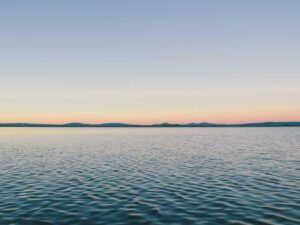
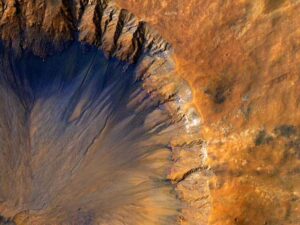



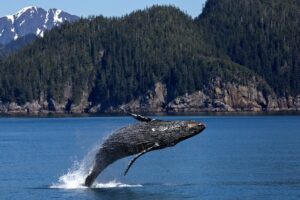

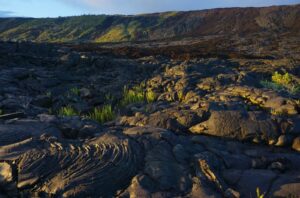

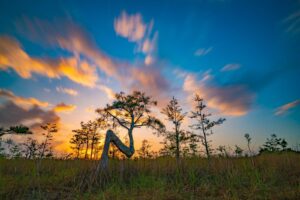


暂无评论内容